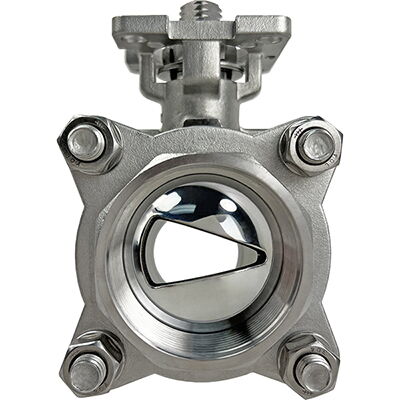Magpie Valve Selection: Accurate Matching Ensures Reliable Control
Valve Technology Sharing: V-Port Ball Valves Selection for Nitrate Media
Recently, in response to a customer's operating condition involving nitrate-containing media, we at Magpie recommended a V-port ball valve after thorough technical evaluation.
During the selection process, several options were considered.
For the valve body material, we chose 304L stainless steel.
Regarding metal-to-metal sealing, we engaged in detailed communication with the client and ultimately recommended STL (Stellite) hardfacing.
The valve trim was fabricated using thermal welding for the ball and STL overlay on the seat.
All internal components were made from 304L stainless steel.
Although some competitors advised the client to use NI60 or NI55 nickel-based alloys, our assessment revealed that these materials were less suitable. After discussing thoroughly with the customer, we agreed on using STL hardfacing, as it offered superior corrosion resistance against nitrate-induced stainless steel degradation.

In fluid control applications involving nitrate ions (NO₃⁻)—such as nitric acid or nitrate salt solutions—the oxidizing and corrosive nature of the media imposes stringent requirements on valve materials. For example, in a chemical project with 50–65% nitric acid at ≤70°C, the corrosion rate of ordinary stainless steel reached 0.1–0.3 mm/year, significantly exceeding the industrial safety threshold (≤0.076 mm/year).
To address this challenge, our tailored V-port ball valve solution was based on the following:
In nitrate environments, stainless steel faces significant risks of intergranular corrosion. 304L, a low-carbon version of 304 (carbon ≤ 0.03%), minimizes chromium carbide precipitation at grain boundaries. Under ≤65% nitric acid and ≤80°C, it demonstrates an annual corrosion rate < 0.05 mm, improving corrosion resistance by over 30% compared to standard 304 (Ref: Corrosion Engineering Handbook).
The sealing surfaces of the valve seat and ball utilize STL (Stellite) alloy overlay. Its metallographic structure—Co-Cr-W solid solution with carbides—achieves hardness of HRC58–62. In nitric acid service, it forms a dense Cr₂O₃ passive film, increasing corrosion resistance 5–8 times over common stainless steel.
Compared with competitor-recommended NI60 (HRC55–60) and NI55 (HRC50–55):
In 68% concentrated boiling nitric acid, STL exhibits a corrosion rate of only 0.02 mm/year, compared to 0.08 mm/year for NI60 and 0.12 mm/year for NI55 (based on lab simulation data).
In terms of wear resistance, STL's friction coefficient (0.2–0.3) is lower than that of nickel alloys (0.4–0.5), reducing long-term wear by 40%, especially in nitrate media with particulates.
Internal components such as the stem and ball are all made of 304L, further enhanced by passivation treatment (with surface oxide film thickness ≥5 μm) to prevent electrochemical corrosion from nitrate ions.
Erosion Resistance: The V-port ball valve's shearing flow design keeps erosion on STL surfaces <0.01 mm/year under flow velocities ≤8 m/s, outperforming nickel alloys at 0.03 mm/year (tested per ASTM G73).
Service Life Comparison: In similar projects, STL-overlaid valves in nitrate media achieved 8–10 years of service life—2–3 years longer than nickel alloy-based valves—reducing total maintenance costs by over 25%.
If you are facing challenges selecting valves for nitric acid or nitrate-rich oxidizing media, we invite you to consult us for:
Material corrosion rate comparison tables based on concentration and temperature;
Salt spray corrosion test reports comparing STL overlay with nickel alloys;
Customized anti-erosion structural design solutions, including optimized hardfacing thickness (e.g., ≥2 mm seat layer).
Magpie Delivers Precision Selection with Trusted Control
If you have any technical inquiries in the valve field, follow Magpie for more professional insights.
